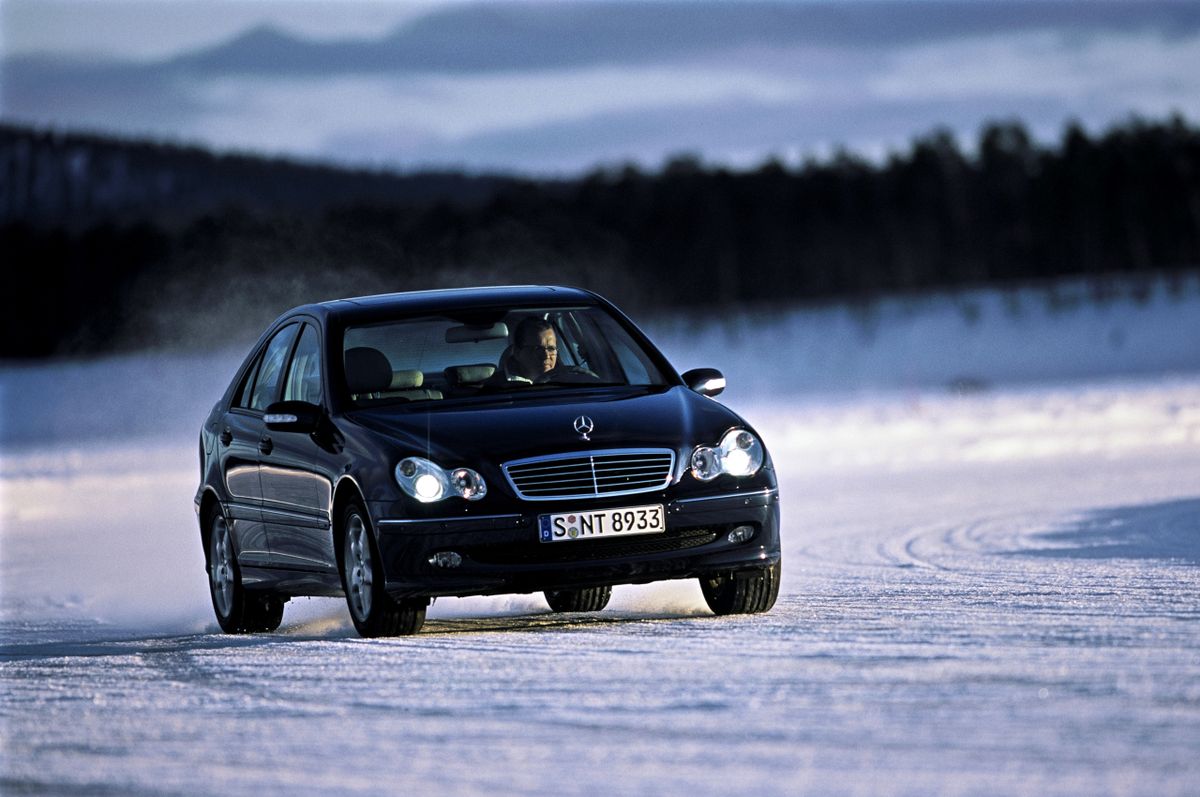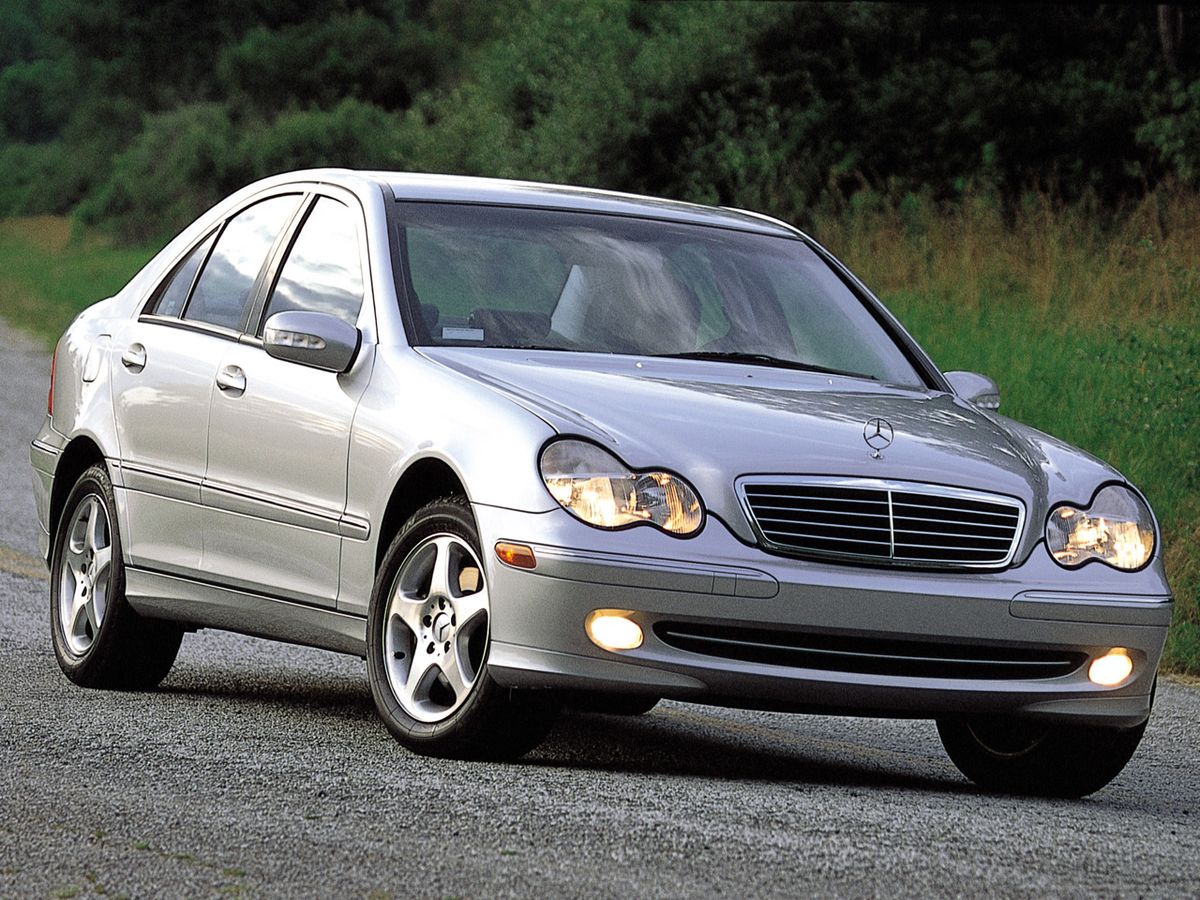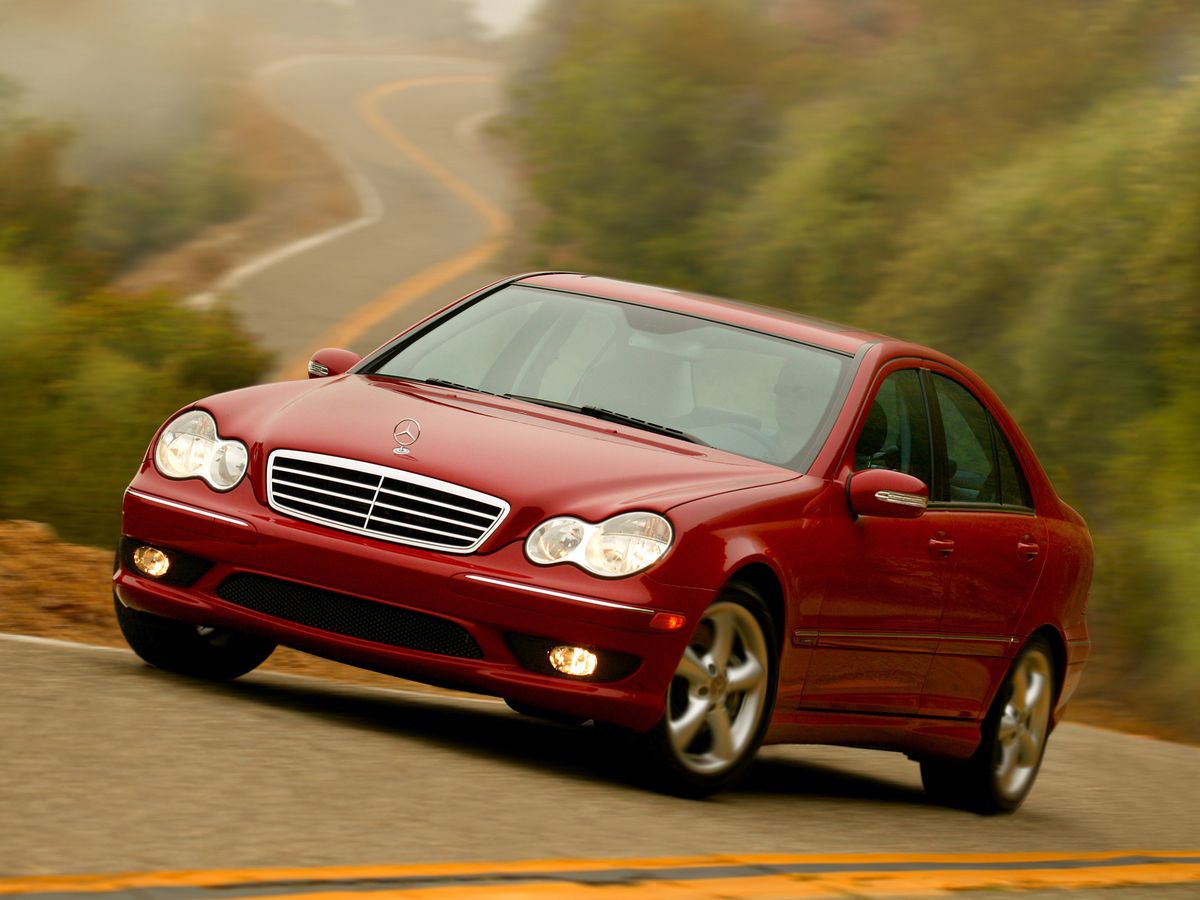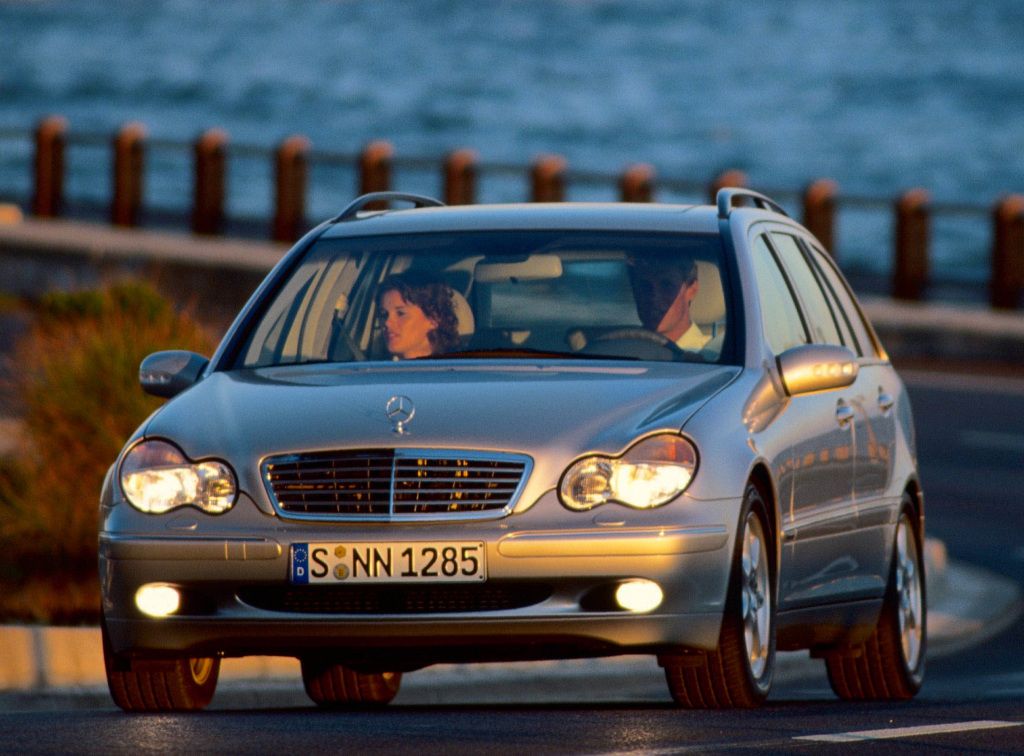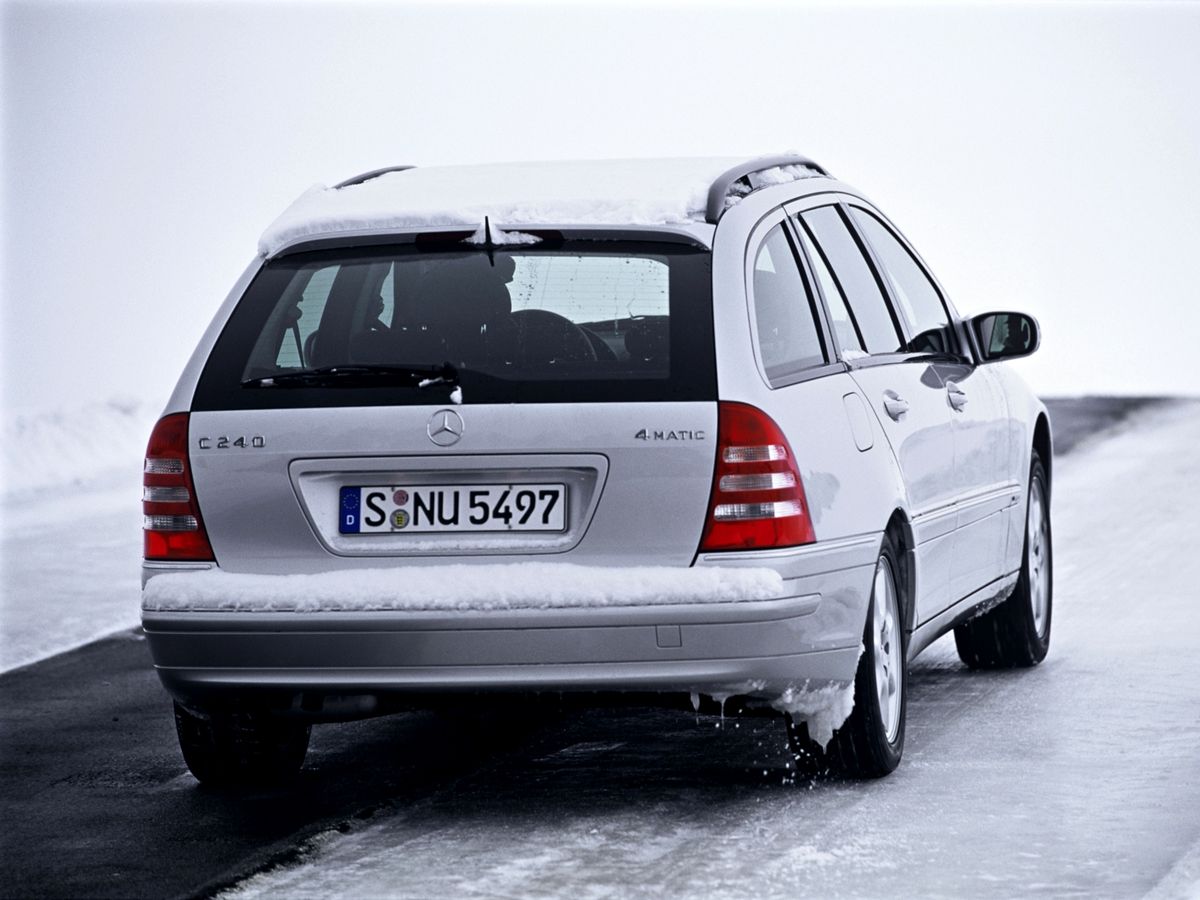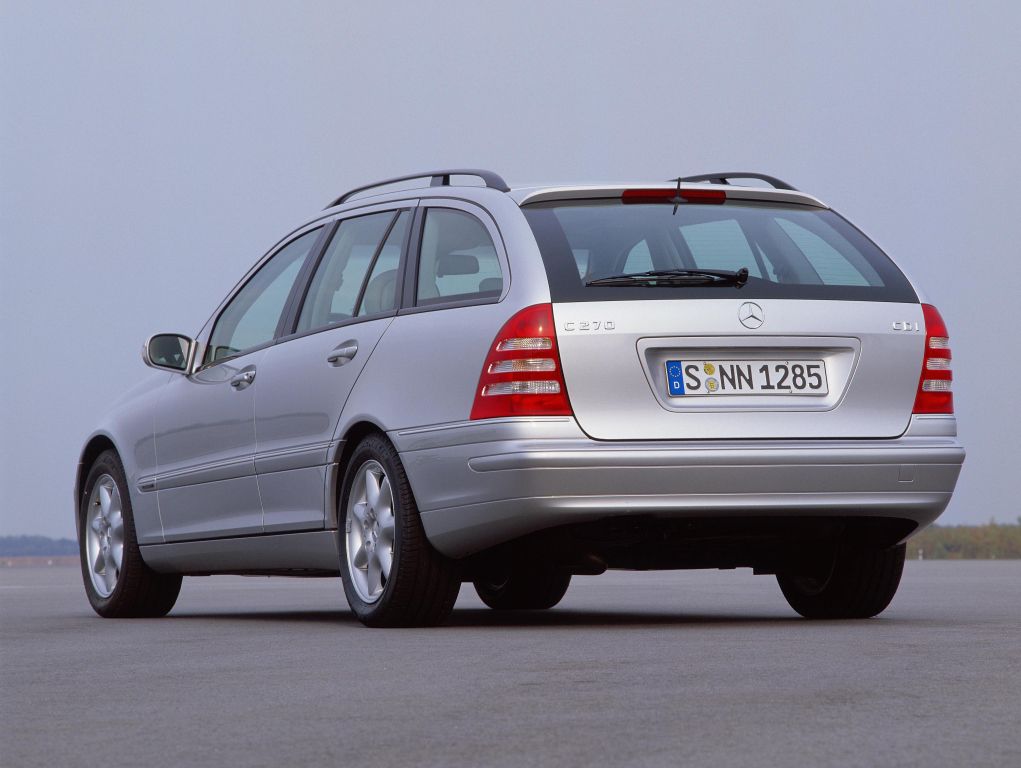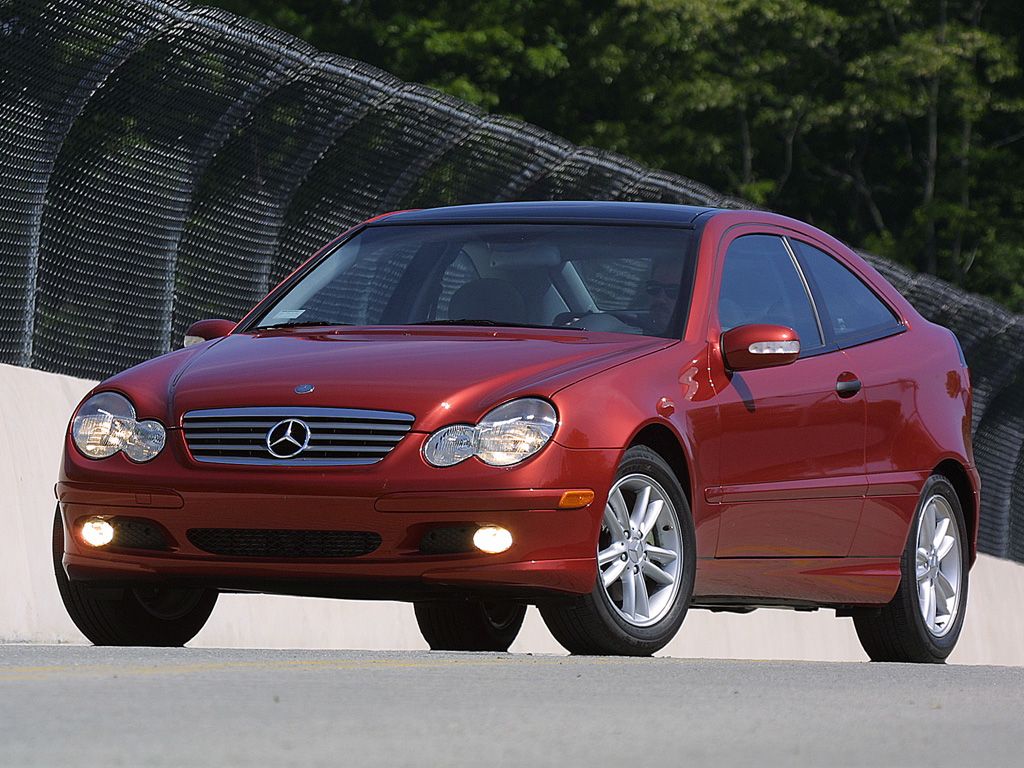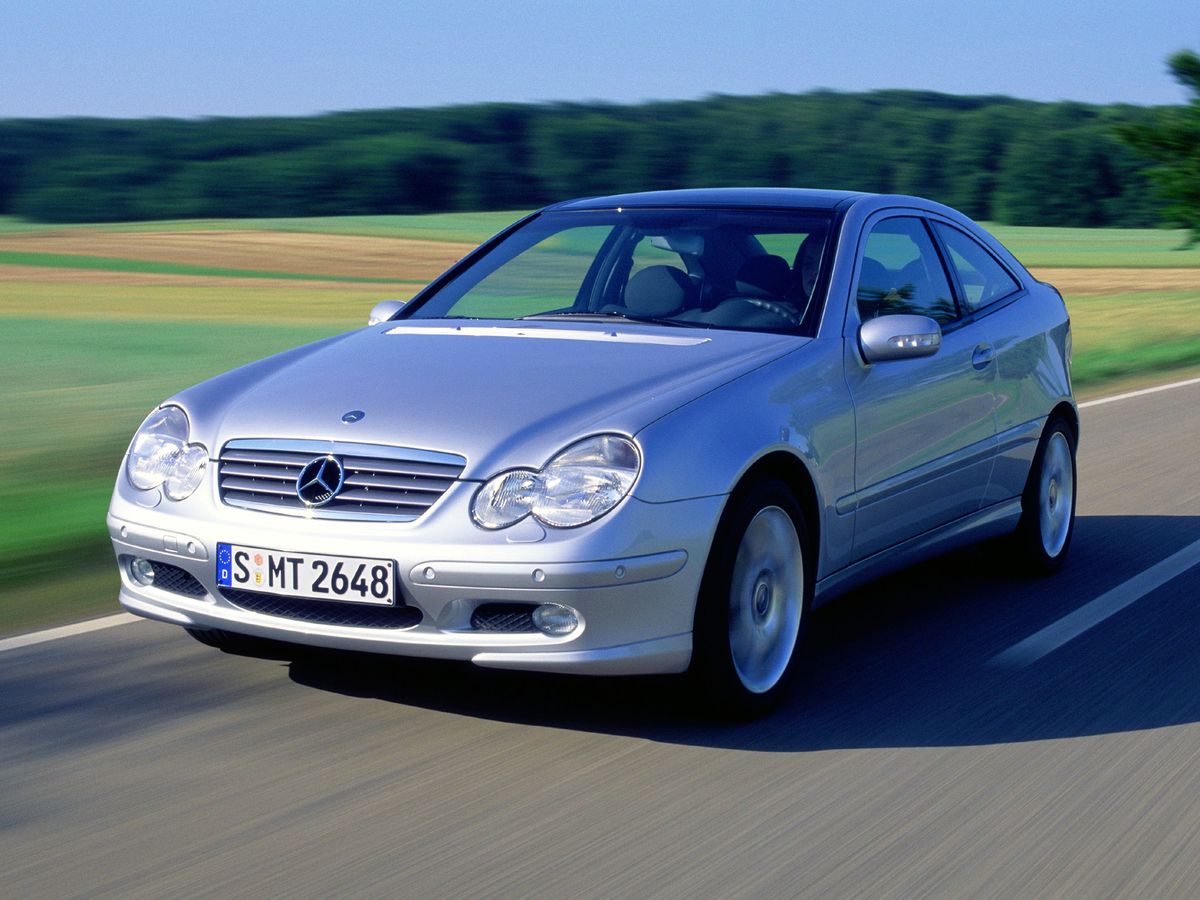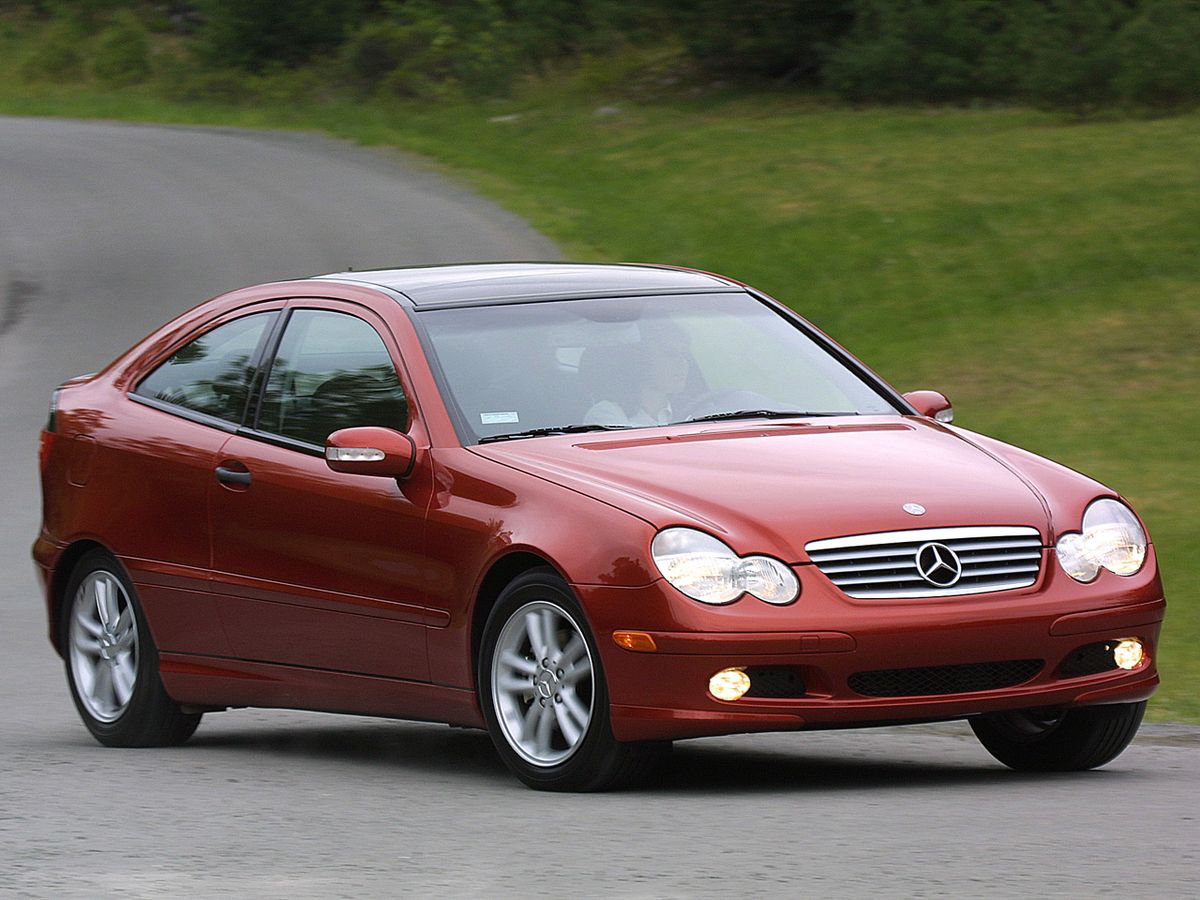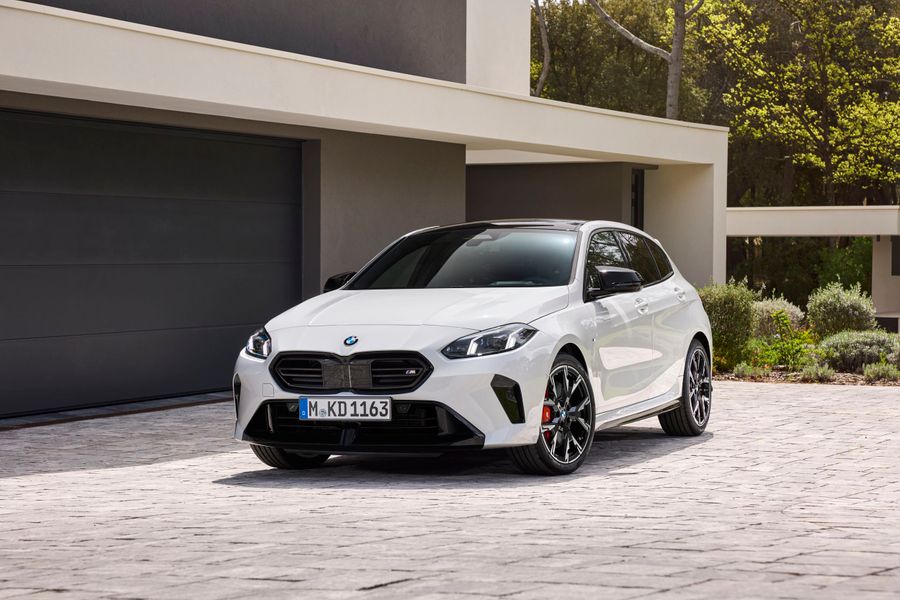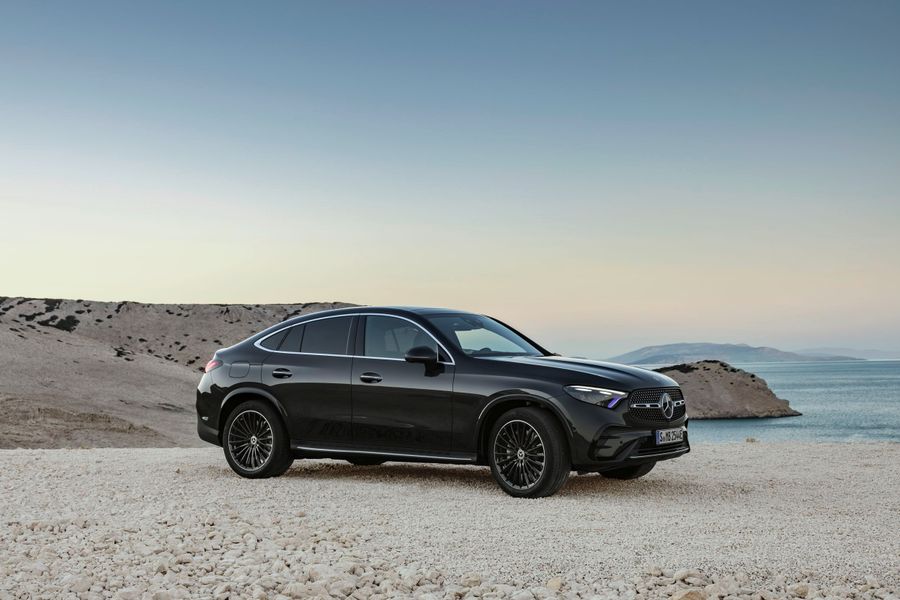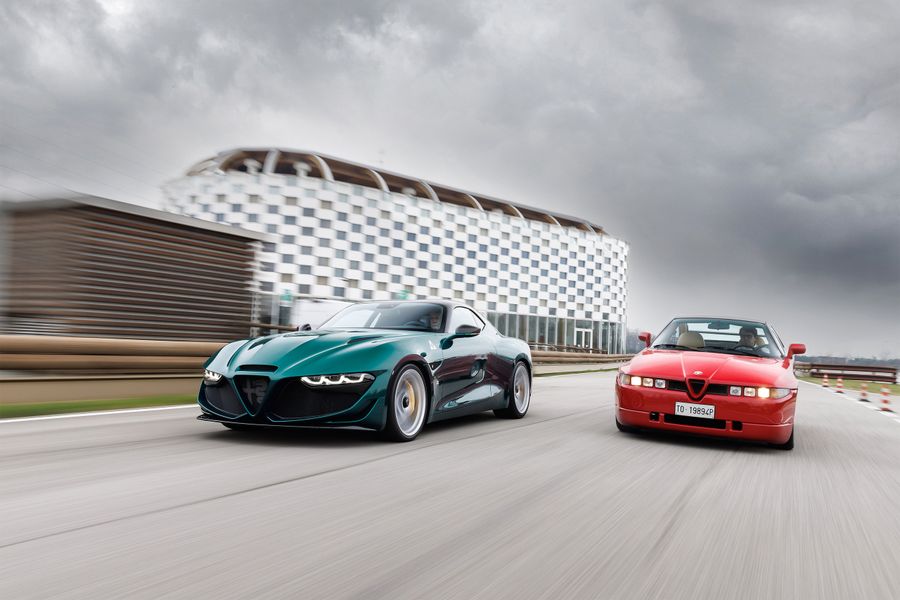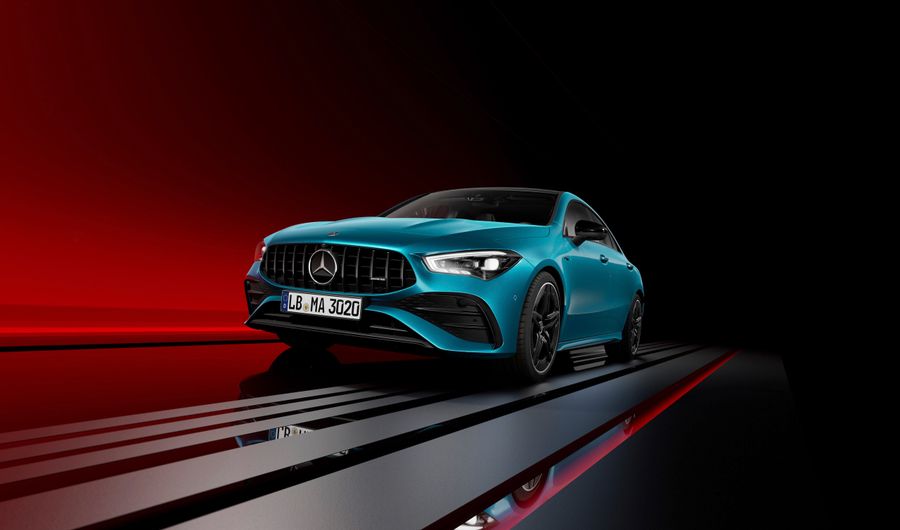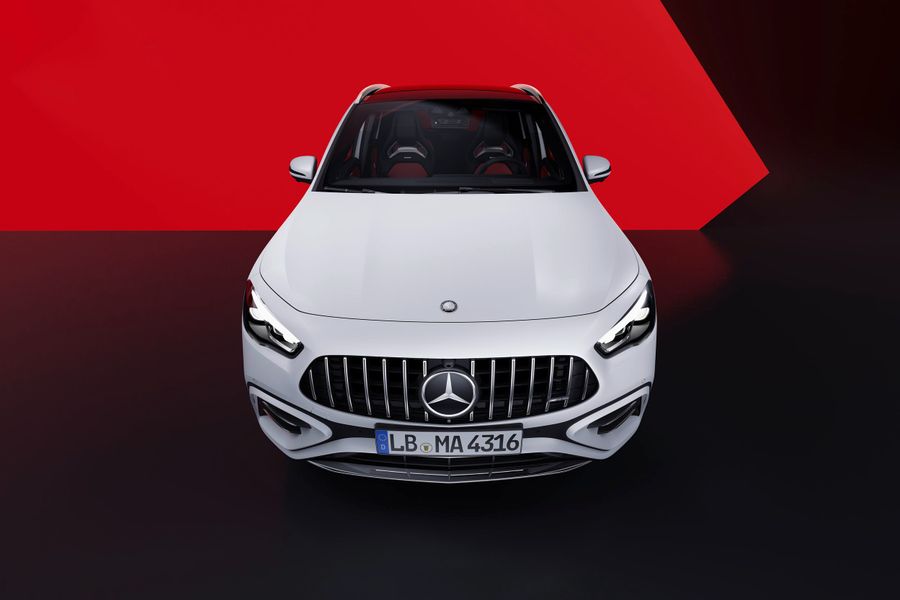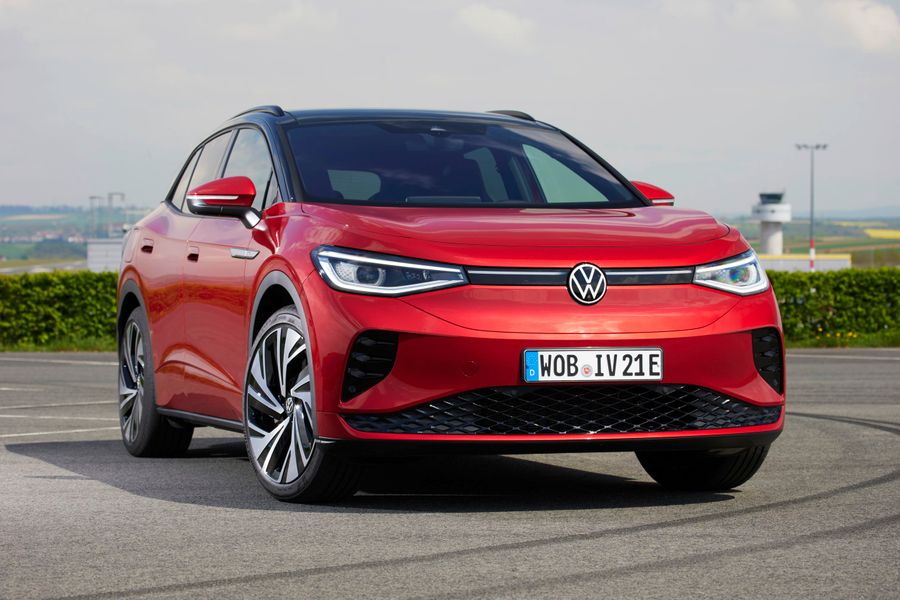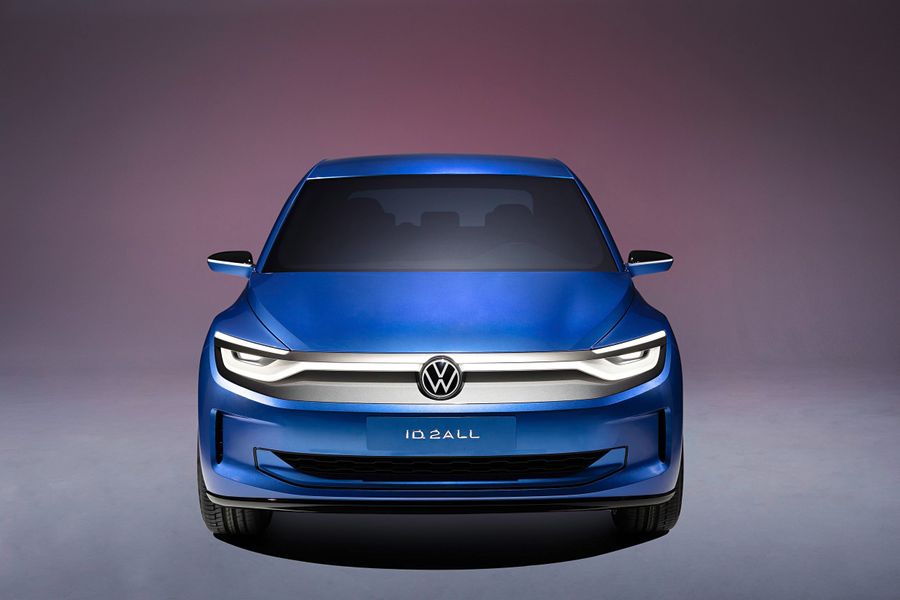
Dynamic and elegant bestseller
The second generation Mercedes C-Class W203 (sedan) was produced from 2000 to 2008, while its restyling took place in 2004. In order to continue the success of the first generation, the standard 203 models acquired numerous technical innovations not previously available in this market segment. More attention was paid to safety and comfort for the driver and passengers. The creators of the W203 wanted to combine dynamics and elegance in one car.
Body and body kit
With a length of the W203 sedan of 4.53 meters, its wheelbase increased by 25 mm compared to the previous generation and amounted to 2,715 mm. At the same time, due to the use of high-strength steels, the body became stiffer and 50% more stable than that of the previous generation.
The front part of the body featured a module with shockproof boxes made of high-strength steel. After an accident, this module could be easily replaced. In collisions at speeds up to 15 km/h, the front module absorbed all the impact energy, protecting the car from damage. A similar system was installed on the rear end of the car.
The aerodynamic drag coefficient of the first generation was 0.30-0.31, and the 203 had this indicator at 0.26-0.27, which at that time made the model the most aerodynamically efficient sedan.
Trim levels and variants
The W203 was offered in three classic versions of Mercedes-Benz design, equipment and options.
- CLASSIC was a basic version that offered the required minimum of options;
- ELEGANCE featured more expensive design, chrome trim, alloy wheels and other elements that emphasize the owner’s financial status.
- AVANTGARDE offered even more advanced interior and exterior design, 16-inch alloy wheels and so on.
But regardless of the version, the second generation C-Class cars were distinguished by a large set of options previously available only on top Mercedes-Benz models: window airbags, driver and passenger adaptive airbags, headlight control functions, multifunctional steering wheel, automatic climate control, motion noise compensation system, advanced voice control system for its time and much more.
In addition to the sedan, the second generation C-Class had an S203 estate (since 2001), which enjoyed great popularity. The estate became truly ‘universal’. Thus, now it was possible to change the interior configuration by removing completely or partially folding the rear seats, in order to increase the volume of the trunk compartment from 470 to 1,384 liters. Unlike its predecessor, the backs of the rear seats could also be fully folded forward, resulting in a whole cargo area of up to 1.5 square meters.
Safety
The high level of safety of the second generation C-Class was achieved by the implementation of a new safety concept, which was based on studies of statistics of real accidents. In particular, the concept implied changes of the design of the front part of the interior. In the event of a collision, different elements of the body were used to ensure the safety of the interior, depending on the force of the impact.
The standard C-Class safety package included driver and passenger adaptive airbags, side and window airbags, belt tensioners, belt force limiters, and options for automatic child seat recognition.
A big step forward was the introduction of the innovative autonomous intelligent cruise control in the fall of 2002. Previously, this system was successfully used on the Mercedes CL, SL, S and E-Class models. The system detected vehicles in front using a radar sensor in the front, calculated the distance and relative speed between the two vehicles, and if the distance to the vehicle in front decreased to dangerous values, the system could reduce the vehicle speed and even apply the brakes.
Engines and chassis
The second generation of the C-Class continues the tradition of developing and installing superior engines that provide the longest mileage without significant breakdowns. The new generation, developed directly for the W203, was introduced in 2002. There were four variants of the 1.8-liter TWINPULSE petrol engine to choose from, which combined technologies such as supercharging, intercooling, four-valve cylinder design, variable camshaft adjustment and an adaptive system.
The power of the new four-cylinder engines ranged from 105 kW (143 hp) to 141 kW (192 hp). Moreover, the W203 could be equipped with the following engines:
- 2.0-liter C 200 KOMPRESSOR supercharged engine with 163 hp, accelerating to 100 km/h in just 9.3 seconds. With such an engine, the C-Class model was the most dynamic car in its category at that time;
- 3.2-liter V6 engine with 218 hp, which also provided outstanding dynamic characteristics of the 203 and made it the leader in its class;
- The world’s first C 200 CGI engine combining direct injection with supercharging and dynamic balancing, generating 170 hp.
Starting with the second generation of the C-Class, Mercedes-Benz engineers began to pay great attention to fuel consumption and exhaust emissions, as European environmental requirements became more stringent and had to be complied with. Therefore, the CGI was equipped with a NOx catalytic converter and surpassed the Euro 4 standards that were still at the stage of development at that time.
The developers managed to improve the already exemplary driving characteristics of the C-Class. Chassis and suspension innovations included a three-link front suspension with MacPherson struts, rack and pinion steering, and an upgraded multi-link independent rear suspension.
In 2002, Mercedes-Benz introduced the 4MATIC permanent all-wheel drive system for the first time in the C-Class with standard ESP (electronic stability program) and electronic traction control system 4ETS. The all-wheel drive C-Class also had V6 Estate versions (C 240 and C 320) in which the 4MATIC transmission was accompanied by a five-speed automatic transmission as standard.
Result
The developers have managed to turn the W203 into a true qualitative step forward even in relation to the previous, also very successful model. The engineers have made this car bigger, better and more comfortable.
The weak point of the previous generation of the C-Class related to safety was eliminated. The crash tests showed that the W203 was the safest car in its class. The NCAP crash test showed the highest 5-star safety rating. At that time, only two cars met such indicators and the W203 was one of them.
Thanks to its qualities, the second generation Mercedes C-Class has become a bestseller. In just the first three years from its introduction to the market, its production volume exceeded 1 million units. But there is no limit to perfection, and the outstanding second generation C-Class underwent a restyling in 2004.

